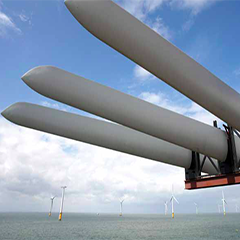So much wind power is produced in one European country today that it can cover the entire electricity demand. But it’s not just Denmark that sings to the tune of wind energy’s success, it’s the entire continent. Acting EWEA CEO Malgosia Bartosik looks at the remarkable rise of wind power.
Right now, wind power plants across Europe are operating on a similar magnitude to the more traditional forms of energy, powering the most fundamental energy shift Europe has seen since the mass-scale use of fossil fuels.
A few years ago wind energy’s success was displayed in the huge jumps in capacity it made every year. In 2000 wind met 2.4 per cent of the EU’s power demand with 12.9 GW installed; by 2014 it met 10.2 per cent with 128.8 GW. Today, wind farms have achieved the scalability and leaps in technological achievement that have transformed it from a rising star on the power generation scene, to a here-to-stay game changer.
Wind is now a real alternative to
ossil fuels
Wind power could once have been considered a ‘nice to have’ technology that boosted Europe’s green credentials. Twenty years ago, few would have thought the technology to be scalable enough to be a real alternative to fossil fuels, not so anymore. Today, the size of wind energy technology, in particular offshore, is staggering. One wind turbine has the same power capacity as an entire offshore wind farm in the 1990s – around 5 MW. In the same timeframe a turbine’s rotor diameter has grown from a mere 35m to 135m. Even more impressive is the very recent rise in offshore wind plant size from an average of 368 MW in 2014, to the four 1.2 GW sites that have been consented at Dogger Bank in the UK this year. These projects only, when completed, will be able to power around 4.5 million households or roughly 2.3 per cent of all households in the EU.



























